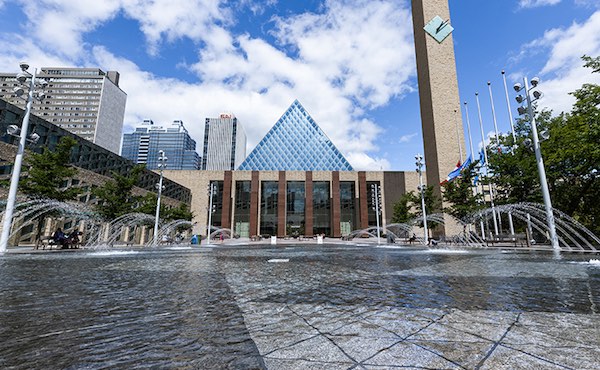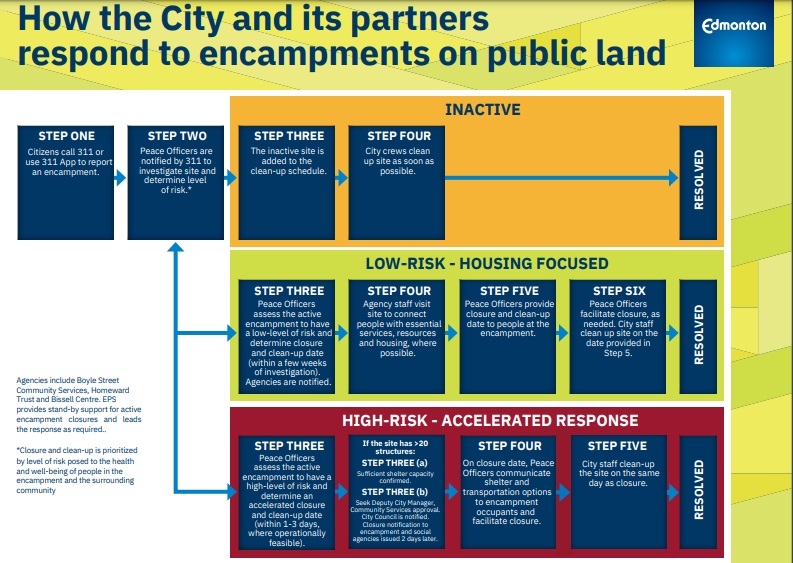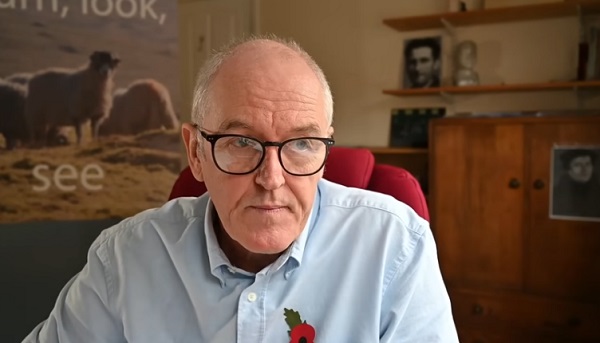City of Edmonton
Edmonton taxpayers facing 7% tax increase as City Hall maintains services

News release from the City of Edmonton
City releases fall budget adjustments
The City released its fall budget adjustment reports today, recommending updates to respond to increased costs and reduced revenues in order to deliver on 2023-2026 budget commitments. A 7.09 per cent tax increase is needed in 2024 in order to maintain services, which is 2.13 per cent above what was originally approved by City Council when it set the four-year budget in December 2022.
It will cost an additional $41.2 million to maintain services in 2024. The City’s financial pressures include a higher than forecast arbitrated salary settlement and significantly higher energy costs, as well as lower than forecast revenues from transit fares and ATCO Gas franchise fees. These budget pressures are expected to continue for the rest of the budget cycle. The City has already experienced most of these pressures this year, leading to the first budget deficit in many years.
“We are continuing to deliver 70 services that Edmontonians rely on every day, and more than 200 construction projects to serve them now and into the future,” said Stacey Padbury, Chief Financial Officer and Deputy City Manager. “We have limited resources, and we know that many Edmontonians are also stretched thin. We are only recommending budget adjustments that are necessary to maintain our services and deliver critical capital projects.”
The 2023-2026 budget provides for increased affordable housing, increased transit service, increased snow and ice control, energy transition and climate adaptation initiatives, as well as major construction projects like the Valley Line West LRT, the Lewis Farms Rec Centre, the rehabilitation of the High Level Bridge and Hawrelak Park, and the Yellowhead freeway conversion. The City adjusts its multi-year budget each fall and spring to account for anything significant that has happened since the budget was set.
In 2020-2022, Council lowered planned tax increases as the City supported Edmontonians through the pandemic. There was no tax increase in 2021 and the tax increase in 2022 was the lowest among major Canadian municipalities.
“These low taxes were necessary, but they aren’t sustainable, especially in the current environment with high prices and significant population growth,” said Padbury. “It’s costing the City more to deliver the same services all while experiencing a growing demand for those services. We can’t continue to absorb the financial impacts we’re facing without adjusting taxes or our service levels, and it will likely take both strategies to ensure we don’t create long-term financial sustainability issues.”
The recommended tax increase would mean that Edmonton households would pay about $750 dollars for every 100,000 dollars of their assessed home value in 2024. That’s $49 more than in 2023. This is an early estimate that will be refined as the City advances through the annual budget, assessment and taxation process. The annual tax increase will affect individual property owners differently, depending on how their property’s assessed value shifts relative to the market. Property owners will learn about their 2024 assessment in January, and will receive their 2024 tax notice in May.
The fall budget adjustment also includes recommendations for the 2023-2026 capital budget. The City is recommending an $88.9 million increase to the capital budget, mainly for affordable housing and critical renewal projects. This increase is less than one per cent of the approved $10.3 billion capital budget.
The City also released its first annual update to the carbon budget. It’s a tool to support Council’s decision-making as they adjust the capital and operating budgets. It also tracks progress on the City’s energy transition goals.
The City is actively working to reduce carbon emissions. The 2023-2026 budget includes more than $376 million dollars in services and construction that support our energy transition goals. The carbon budget update makes it clear just how much more needs to be done, together with the community and other orders of government, to meet our goals of being carbon neutral as a corporation by 2040 and as a community by 2050. Without further action, our updated forecasts show that we’ll deplete both our corporate and community carbon budgets one year earlier than anticipated. This is not the result of any budget decisions made by Council, but rather community impacts as activities return to pre-pandemic levels.
The fall budget adjustment reports will be presented to City Council for discussion and deliberation on November 7, 2023, along with the first annual update to the carbon budget. Council will discuss and finalize any budget adjustments during the last two weeks of November. Edmontonians can view the City’s recommended adjustments and learn more about the process at edmonton.ca/budget.
Alberta
Master agreement approved for event park and Village at ICE District

News release from the City of Edmonton
|
City Council has approved the Master Agreement between the City of Edmonton and the Oilers Entertainment Group (OEG) to develop the Public Event Park and the Village at ICE District. Along with the Government of Alberta and the OEG, the City is working to accelerate the development of more housing, new public infrastructure and economic opportunities in the city’s downtown area. In addition to creating new development in the ICE District, the signing of the agreement enables the City to access provincial funding to demolish the Coliseum and continue to progress work on Exhibition Lands.
The total cost of all projects is $408.2 million, which will be shared among all three partners and will deliver:
“This type of investment in downtown helps answer the call of downtown vibrancy and could have a cascade effect to stimulate further investment,” said Edmonton City Manager Eddie Robar. “We thank all our team members that had a part in getting this agreement negotiated and in place, as it was a lot of work and represents a huge step forward.”
The event park, estimated at $250 million, will increase downtown vibrancy with events that bring people downtown including low-to-no-cost events for the community as part of the Public Benefits Agreement. It will also generate positive publicity and enhance Edmonton’s reputation as a world-renowned destination, while adding to the local economy.
The preliminary work for the Village at ICE District, estimated at $68.2 million, will expedite the development of 2,500 new housing units and stimulate an estimated $1 billion in private sector investment. It will also lead to the creation of a new downtown park and enhance public streetscaping, including wider sidewalks and pedestrian crossings.
The Coliseum Demolition and Improvement Project, estimated at $90 million, includes $55 million from the provincial government and $35 million from the City of Edmonton. This project will fund the demolition of the Coliseum and the construction of public infrastructure in Exhibition Lands to help create a unique, centrally-located infill urban community that is well-connected to downtown and other areas of the city in the coming decades.
“These catalytic investments are going to set off the next round of transformational growth and development in our downtown, and these projects demonstrate the impact of real partnership for economic development,” said Puneeta McBryan, CEO of the Downtown Business Association. “It is encouraging for the Edmonton business community to see the Government of Alberta and City of Edmonton working together to take our downtown economy to the next level, coupled with the proven success and significant investment from their partners at Oilers Entertainment Group. We’re so excited to see all of this come to life.”
The City will use revenues from the Capital City Downtown Community Revitalization Levy (CRL) to fund its portion of the Event Park and site servicing for ICE District projects. It will also leverage land development revenues already earmarked in the capital budget for the Coliseum demolition to fund other important early work in the Exhibition Lands development.
Council’s approval of the master agreement and associated capital profiles allows the City to execute the agreement with the OEG, which paves the way for all three projects to progress. The master agreement also ensures that grant agreements between the City and the Province must be executed, confirming the provincial funding contributions for all projects.
|
|
|
|
For more information:
|
City of Edmonton
City of Edmonton defends response to homeless encampments

Edmonton homeless encampment from 2022 (Photo: Alexander Shamota, Alberta Views Magazine).
News release from the City of Edmonton
Overview of the City of Edmonton’s information in Court about its response to homeless encampments
The City of Edmonton’s response to encampments prioritizes the well-being of unhoused and vulnerable persons, while acknowledging the impacts that encampments can have on the entire community. The City’s approach seeks to acknowledge all relevant perspectives: the lived experiences of the unhoused, the needs and expertise of social agencies, available information from law enforcement, the specialized expertise of our Fire Rescue Service, and the voices of those communities impacted by encampments. The City’s response to encampments accepts that outdoor sheltering is not a safe or sustainable solution for managing homelessness.
At court on January 10 and 11, the City of Edmonton will be responding to the case brought by the Coalition for Justice and Human Rights. In responding to this legal challenge, the City does not seek to minimize the lived experiences and significant challenges faced by our unhoused residents. However, the City of Edmonton seeks to ensure that the court has access and understanding of the full picture and perspective of humans and organizations impacted by homelessness.
A compassionate and effective response to homelessness requires a combination of long term solutions and transitional accommodations. Our experience has shown that, at times, immediate intervention is required.
The City has filed evidence with the Court, and will be presenting the Court with the following facts:
- While numbers of shelter beds and unhoused persons vary from day to day, Edmonton’s shelters have had excess capacity throughout 2023, with even more capacity available in 2024. In periods of extreme demand, capacity can be scaled upwards immediately. A person seeking indoor shelter in Edmonton will never be left without an indoor place to shelter.
- Edmonton’s shelter system supports and accommodates persons with diverse backgrounds and lived experiences, including persons who use drugs, all genders and sexualities, all religions, couples, and persons with disabilities. Edmonton has Indigenous-led shelter spaces, women-only spaces, and specialized shelter programming for Indigenous persons who have experienced trauma.
- Outdoor sheltering poses severe dangers to the unhoused. Evidence will be presented of examples of gang victimization, armed robbery, physical and sexual assault, sexual exploitation, sanitation issues leading to disease, frostbite and cold-weather injuries, and fatalities caused by tent and encampment fires. These risks will be shown to be attributable to outdoor sheltering, not the removal of encampments.
- In the last five years, Edmonton Fire Rescue Services has reported at least seven deaths and 26 injuries from 276 fires that could be attributed to tents or encampments. This number is likely a significant underestimate due to the challenges inherent in investigating these types of fires.
- Expert medical evidence from Alberta’s former Chief Medical Officer of Health will be presented showing that encampments increase potential communicable disease transmission and fire- and violence-related injuries when compared with emergency shelters.
- Encampments can pose a danger to the community at large. Evidence will be presented of violence arising from encampments, accumulations of human feces, biohazardous waste, weapons and drug paraphernalia surrounding encampments, uncontrolled fires and propane cylinder explosions, and examples of wildfires starting at encampments in Edmonton’s natural areas.
- The number of complaints from members of the public has significantly risen over the last number of years. Between January 1, 2023 and October 22, 2023, there were 13,683 complaints from concerned Edmontonians.
- Encampment closures are evaluated on a risk matrix. This is an attempt to respond to community concerns, ongoing damage to the environment and infrastructure, as well as the inherent dangers in outdoor encampments. When camps are first assessed and again when closed, offers are made to take individuals to a shelter. As well, during the encampment closure process, opportunities are provided for individuals to connect with various community organizations supporting the unhoused.
- Evidence will be presented on the impacts associated with Camp Pekiwewin (2020). The City has been provided evidence of physical and sexual violence, gang violence, sex trafficking, sanitation and biological health hazards for occupants of Camp Pekiwiwin. Evidence provided by residents of the Rossdale community shares examples of violence and physical assault, theft of property, residents leaving the community for their own safety, vandalism, fire, and significant River Valley damage due to firewood cutting by encampment occupants.
The City is sharing this information from its filed legal documents as a public service. As the matter is before the Courts, no additional public commentary will be made.
-

 Crime1 day ago
Crime1 day agoCBSA Bust Uncovers Mexican Cartel Network in Montreal High-Rise, Moving Hundreds Across Canada-U.S. Border
-

 Environment1 day ago
Environment1 day agoThe Myths We’re Told About Climate Change | Michael Shellenberger
-

 Energy2 days ago
Energy2 days agoIt should not take a crisis for Canada to develop the resources that make people and communities thrive.
-

 Dr John Campbell2 days ago
Dr John Campbell2 days agoCures for Cancer? A new study shows incredible results from cheap generic drug Fenbendazole
-

 Artificial Intelligence1 day ago
Artificial Intelligence1 day agoAI Faces Energy Problem With Only One Solution, Oil and Gas
-

 Health1 day ago
Health1 day agoLack of adequate health care pushing Canadians toward assisted suicide
-

 Alberta17 hours ago
Alberta17 hours agoATA Collect $72 Million in Dues But Couldn’t Pay Striking Teachers a Dime
-

 Media16 hours ago
Media16 hours agoBreaking News: the public actually expects journalists to determine the truth of statements they report






